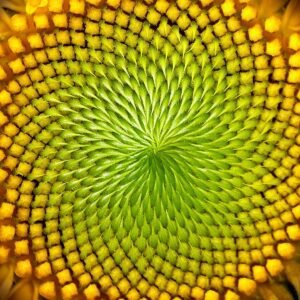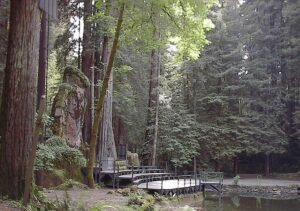New Year’s Eve holds a special place in the minds of those fascinated by time travel. As the calendar shifts, strange stories and eerie evidence often emerge, sparking discussions and theories. Could this night really be a focal point for time travel, as it transitions from one year to the next? With various tales about unexplained appearances and mysterious footage linked to New Year’s Eve, curious minds are eager to explore these strange occurrences.

Throughout history, several incidents have led many to believe in the existence of time travel. On this magical night, when clocks reset and the new year begins, some sense it may offer a unique opportunity for travelers from the future. Theories abound, suggesting that this date marks a time not only for celebration but also for unraveling mysteries that challenge our understanding of reality.
Captured in legends and even caught in some puzzling recordings, New Year’s Eve has become a hotspot for debates over what is considered real-life time travel evidence. By examining these fascinating tales and connecting them to this significant night, readers might gain new insights into why the allure of New Year’s Eve endures in time travel lore.
Key Takeaways
- New Year’s Eve is linked to intriguing time travel stories.
- Mysterious events and footage often connect to this night.
- This topic challenges traditional views of reality.
What Are Time Travel Proofs?
Time travel proofs explore the idea of moving through time, emphasizing both scientific theories and intriguing accounts. Scientists like Albert Einstein have laid foundational concepts, such as special relativity, which suggests time can speed up or slow down depending on the speed of light.
In scientific circles, wormholes are imagined as shortcuts through space and time. These theoretical passages, supported by some aspects of quantum physics, raise possibilities for time travel. Astrophysicists often discuss how gravity can bend the fabric of space and time, influencing potential time travel routes.
Satellites and the International Space Station provide real-world examples of slight time shifts. Due to their high speeds and weaker gravity compared to Earth, they experience time differently. This phenomenon, predicted by Einstein’s theories, has been confirmed through experiments.
The James Webb Space Telescope looks back in time by capturing light from distant galaxies. This ongoing observation offers glimpses of the universe’s past and sparks discussions about time travel.
Some popular thought experiments include the Grandfather Paradox, which questions the consequences of changing events in the past. These paradoxes challenge what we know and open debates about the nature of reality.
Stephen Hawking and other notable scientists have pondered the possibilities and limitations of time machines. Though current technology cannot achieve this, the theoretical frameworks continue to captivate imaginations around the world.
New Year’s Eve: A Magnet for Time Travelers?

New Year’s Eve has long been shrouded in intrigue. This date marks the ending of one year and the beginning of another, creating a unique moment in time. Some theorists suggest that this transition may be a focal point for time travelers due to its symbolic significance.
On New Year’s Eve, people worldwide join in celebrating with family and friends. The synchronization and coordination of time zones create a collective consciousness focused on clocks and time itself. This global unity might be seen as an appealing target for those with the ability to travel through time.
Famous Stories and Footage:
- In 1995, footage reportedly surfaced showing a person with a futuristic device at a New Year’s Eve celebration. This sparked debates about whether this was evidence of time travel.
- Reports often emerge of people witnessing individuals dressed in clothing not appropriate for the era or possessing unexplained technology at New Year events.
Theories argue that the widespread use of clocks and countdowns could act as signals or coordinates for travelers. The precise timing emphasizes humanity’s reliance on temporal measurement, possibly attracting individuals exploring time’s boundaries.
Some speculate that New Year’s Eve lacks the chaos of other major events, offering a perfect blend of significant energy without overwhelming activity. This could provide time travelers with a chance to study or interact with people while staying relatively unnoticed.
While no solid proof has confirmed time travel on New Year’s Eve, the mysteries surrounding this moment continue to captivate imaginations.
Famous Time Travel Stories And New Year’s Connections

Time travel stories captivate imaginations, often blending facts with fiction. Some accounts even connect to New Year’s Eve, a night believed to hold mystical energy.
Charlie Chaplin Film Mystery
The 1928 Charlie Chaplin film “The Circus” includes a puzzling scene. A woman appears to talk on a device resembling a cellphone. This curious image has sparked debates and theories about potential time travelers being present on set.
Time Traveling Hipster
In a photograph taken in 1941, a man dubbed the “time traveling hipster” stands out. His modern attire and sunglasses, unusual for the era, capture attention. Though the photo was not taken on New Year’s Eve, the image stirs discussions on how such events could sync with key moments like New Year’s celebrations.
The Curious Case of the Petit Trianon
Marie Antoinette is said to have encountered time anomalies at the Petit Trianon. Reports suggest she perceived visions of another time. Although not New Year’s Eve-related, paranormal events like these invite consideration of whether time travel experiences could cluster around significant dates.
Fictional Stories and Real-life Parallels
Science fiction, like “Doctor Who” and “Back to the Future,” often revolves around New Year’s due to its symbolic significance. Real-life figures like Air Marshal Sir Robert Victor Goddard reported time slips, lending plausibility to such theories.
Modern Urban Legends
Tales like the Philadelphia Experiment or John Titor’s online posts add mystery to time travel lore. Although often debunked, the intrigue persists. These stories intersect with New Year’s Eve’s celebration of time, encouraging endless exploration of the unknown.
Debunking And Analyzing The Evidence

Time travel is a fascinating idea, but not all claims hold up under scrutiny. Many pieces of alleged evidence, like photos or videos, are often explained by more mundane means. For instance, some say an apparent cellphone in an old movie was actually a hearing aid, pointing to historical context.
Nigel Watson, a noted expert, often contributes to understanding purported time travel phenomena. His UFO Investigations Manual provides insights into many strange incidents. Watson emphasizes examining all possibilities before jumping to conclusions about time travel proofs.
Some folks believe certain gadgets, like an iPhone, appear in historical objects. These claims are usually debunked by considering the availability of similar-looking items from the past. Such analysis helps clear misconceptions about real-life time travel evidence.
Experiments have also been conducted to test the feasibility of time travel theories. While intriguing, they often reveal the challenges and obstacles, rather than proving actual occurrences. Experiment results thus highlight how much more is needed to verify claims of New Year’s Eve time travel.
Reviewing such claims requires a neutral approach. Whether analyzing arguments or theories that suggest New Year’s Eve draws time travelers, it is crucial to maintain clarity. This method helps differentiate between reality and myth, ensuring that only credible evidence is considered.
Frequently Asked Questions

Time travel has always been a captivating subject, especially with the mysterious allure of New Year’s Eve. This section addresses common questions about claims of time travelers, theorized connections with New Year’s Eve, and the credibility of popular stories and media.
Who are some individuals claimed to be time travelers, and what evidence supports their stories?
Several people have claimed to be time travelers, including John Titor, who appeared on internet forums in the early 2000s. Titor claimed to be a soldier from the future, predicting events that have sparked ongoing interest.
Which real-life incidents or events have presented potential proof of time travel?
One intriguing incident is the case of a man named Rudolph Fentz, who supposedly appeared in 1950 in New York City wearing outdated clothing. This story has circulated widely, although its authenticity is often questioned.
What connections do theories draw between New Year’s Eve and increased time traveler activity?
Some theories suggest that New Year’s Eve might attract time travelers due to its symbolic transition between years. The unique energy of this time could be seen as a beacon for those traveling between different timelines.
Are there any notable predictions or foretellings by individuals purporting to be from the future related to New Year’s Eve?
Certain alleged time travelers have made predictions tied to New Year’s Eve, although these claims often lack verifiable proof. Despite skepticism, these stories continue to capture the imagination of many fascinated by time travel possibilities.
What have experts, including scientists like Albert Einstein, stated regarding the feasibility of time travel?
Albert Einstein’s theories, particularly his work on relativity, suggest that time travel might be theoretically possible under certain conditions. However, practical time travel remains speculative and unproven within scientific circles.
Can any of the famous or viral time travel photos and videos be substantiated with factual evidence?
Many viral images and videos that claim to showcase time travel often lack concrete evidence. Analysis usually reveals photo manipulation or ambiguous contexts, leaving these artifacts more as curiosity than proof.


